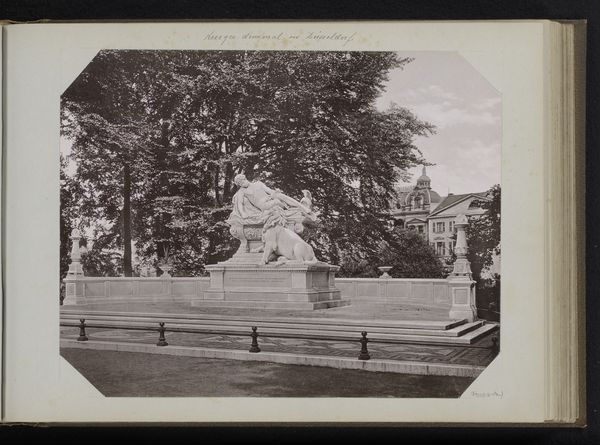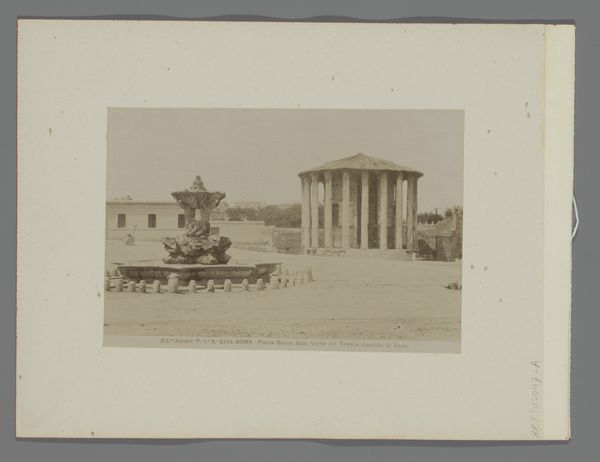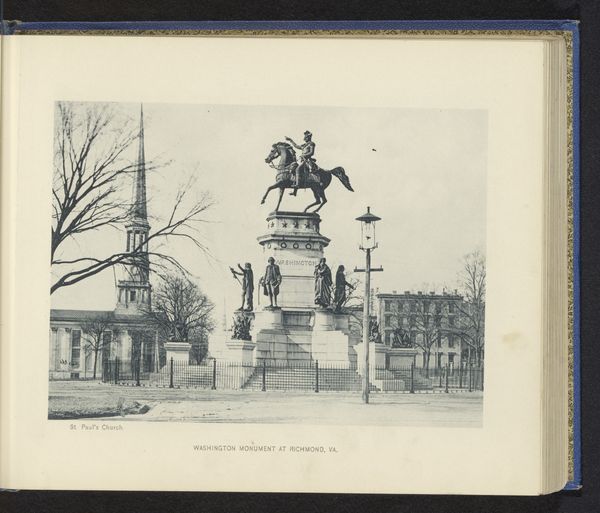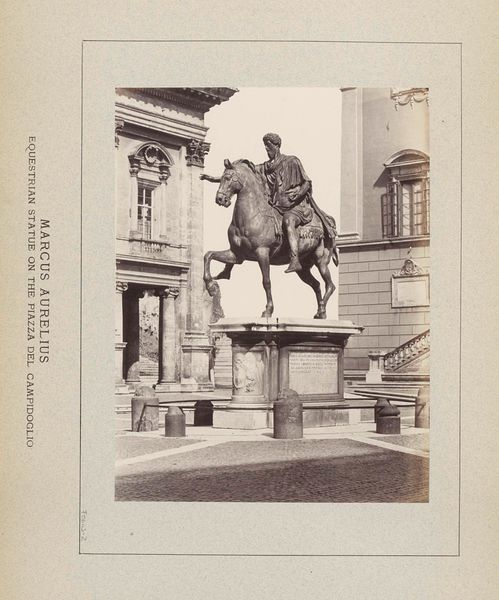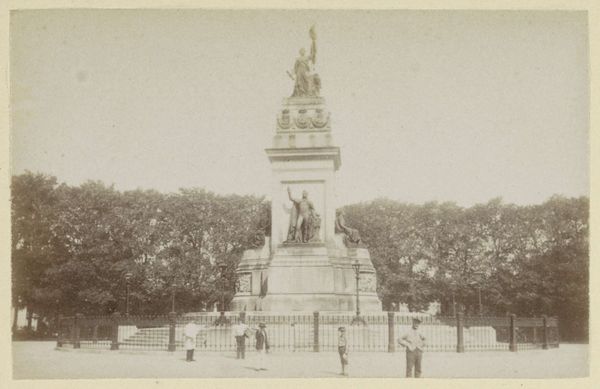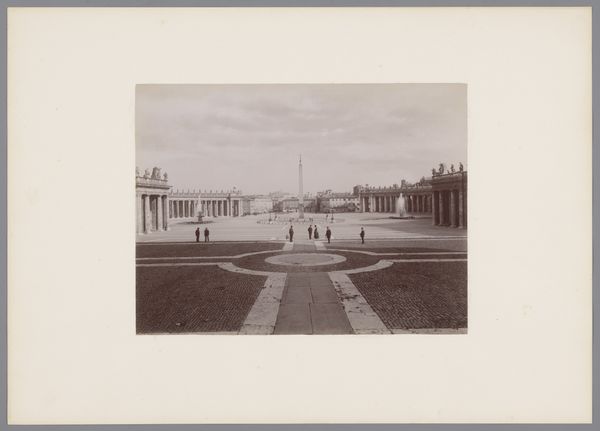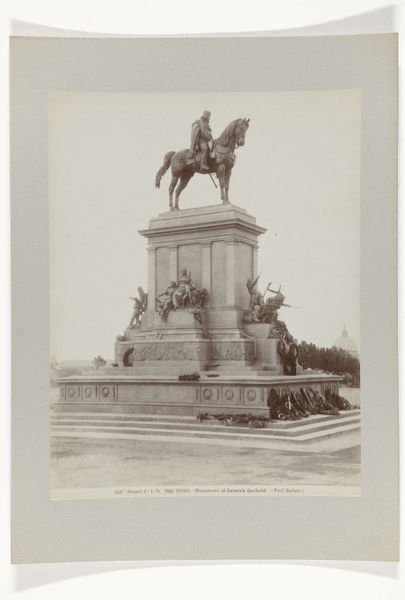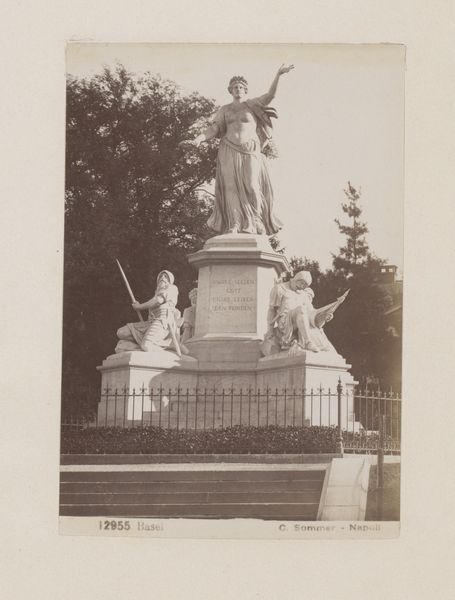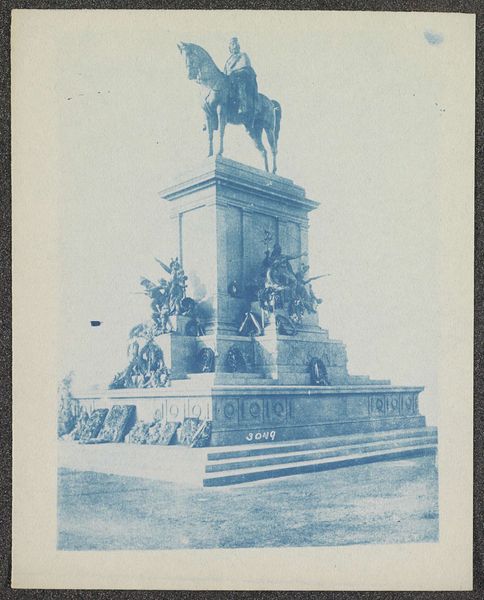
Gezicht op Government House in Calcutta met op de voorgrond het ruiterstandbeeld van Viscount Hardinge of Lahore c. 1865 - 1875
0:00
0:00
photography, gelatin-silver-print
#
portrait
#
landscape
#
photography
#
orientalism
#
gelatin-silver-print
Dimensions: height 178 mm, width 224 mm
Copyright: Rijks Museum: Open Domain
Curator: Looking at this gelatin-silver print, it's striking how the photographer, though anonymous, captures Calcutta's Government House sometime between 1865 and 1875. It includes a statue of Viscount Hardinge. Editor: My first thought is the sheer emptiness of the foreground. All that empty lawn almost feels like a stage setting. The buildings seem so distant and almost secondary. Curator: It's precisely that deliberate framing that speaks volumes. Consider the era: British colonial rule at its peak. The statue monumentalizes power, casting a long shadow over the space. The photograph performs this power for viewers back home. Editor: It also foregrounds a key tension in photography of that era, grappling with technical constraints like limited depth of field. Was this distance a necessity, or was the photographer consciously playing with notions of authority and distance? I think, on another level, the choice of black and white makes it so austere, the materiality of gelatin, silver, and paper reminds us how the Empire was literally built using precious resources from across the globe. Curator: Absolutely. The stark contrast heightens the monument's dominance. The buildings, symbols of governance, are reduced, made impersonal, especially as they are rendered through photography, which was gaining prominence as a documentary tool in the mid-19th century. Photography plays a part in documenting and disseminating imperial narratives. Editor: The gaze, here, is clearly about capturing the imperial administration and solidifying the place within the visual economy of power. I wonder, also, if the flatness flattens the colonized subjects as mere background elements, rather than full-fledged humans inhabiting and activating the place? Curator: That’s an incisive point. The people visible are incredibly small; reduced to almost insignificant features within this vast colonial landscape, emphasizing, of course, the overall power dynamics in play. Editor: It’s incredible to think of all the labor and resources that went into producing this image and its subject matter; both are enmeshed in imperial politics. Curator: Indeed. This photo invites reflection on how power operates through image-making and commemorates certain perspectives while simultaneously suppressing other narratives. Editor: Right, it all reminds us that even something as seemingly straightforward as this vista, has implications concerning cultural material, legacy, and the unequal distribution of historical storytelling.
Comments
No comments
Be the first to comment and join the conversation on the ultimate creative platform.

